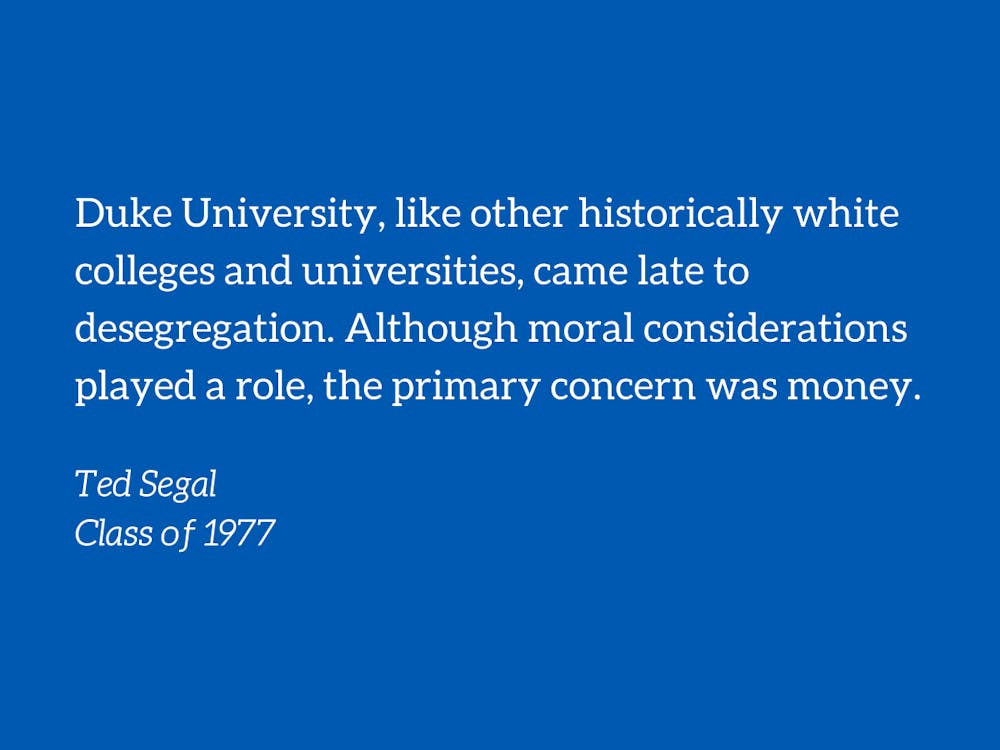Since this past summer, historically white universities throughout the nation have sought to reckon with their long history of anti-Black racism. At Duke, president Vincent Price committed to taking “transformative action now toward eliminating the systems of racism and inequality that have shaped the lived experiences of too many members of the Duke community.” Likewise, at Princeton, President Christopher Eisgruber acknowledged that “racist assumptions from the past . . . remain embedded in structures of the university itself.”
Robert King, Assistant Secretary in the Office of Postsecondary Education at the U.S. Department of Education, read Princeton’s important statement and saw a compliance issue requiring investigation. He wrote Eisgruber in September demanding to know how Princeton could square its acknowledgment that structural racism persists at the school with the nondiscrimination and equal opportunity assurances it had given the department over many years. An expansive records production request followed, along with a threat: based on the facts developed, the Department may consider an action against Princeton to recover funds previously advanced under government programs.
Princeton responded, calling it “unfortunate that the Department [of Education] appears to believe that grappling honestly with the nation’s history and the current effects of systemic racism runs afoul of existing law.” Although the investigation would be expensive and burdensome, the university’s anti-racism efforts would continue.
The government’s assault on anti-racism efforts on campus did not end there. Concerned that diversity instructors are teaching that “men and members of certain races, as well as our most venerable institutions, are inherently racist and sexist,” the president issued an executive order prohibiting colleges and universities, as well as other entities receiving government funding, from including specified divisive concepts and race-based ideologies in diversity training. Failure to comply with the executive order could result in cancellation of existing contracts and a declaration of ineligibility for future contracts. Although the vast majority of institutions proceeded with scheduled diversity training, the Chronicle of Higher Education reported that at least a few paused such programs.
It was not always this way. While government involvement in higher education has been ongoing for decades, in prior eras, the federal government sought to advance the cause of racial justice, not block it. The struggle to desegregate HWCUs provides a clear illustration with Duke as an example.
Duke University, like other historically white colleges and universities, came late to desegregation. Although moral considerations played a role, the primary concern was money. By the early 1960s, the federal government advised schools that to be eligible for future government contracts, private universities would be required to have nondiscriminatory admissions policies in place. Once fully implemented, these policies would derail Duke’s aspirations to become a leading national research university. In response, the Duke board of trustees relented and agreed to admit Blacks. “One would have to concede,” religion professor Barney Jones wrote the Duke archivist in 1975, “that integration at Duke was provoked more by economic than moral considerations. We integrated because it was necessary rather than because it was right.”
Pressure on racial matters from the federal government did not end with desegregation. Throughout the Sixties, the government used its financial leverage to pressure historically white institutions to eliminate racist policies persisting from the Jim Crow era. One area of particular note was the racist admissions policies of fraternities and sororities. Even after undergraduate desegregation in 1963, a study conducted by the campus chapter of the Congress for Racial Equality found that eleven fraternities and two sororities at Duke had clauses in their national constitutions prohibiting Black students from joining. A copy of the Membership article of the constitution of the Kappa Alpha Order provided to the Duke president in 1965, for example, provided that “no infidel; no person of the religion of a Jew; no person of African or Oriental descent . . . shall be eligible to membership in the order.”
During the summer of In 1966, Duke President Douglas Knight sent a letter to the school’s fraternities and sororities directing them to eliminate all racial and religious restrictions to membership. The groups were also asked to sign a nondiscrimination pledge. In his letter, Knight appeared to take the high ground, explaining that Duke could not permit the use of university property by any organization that, through its organizational documents or practice, bars members based on “race, creed or color.” Left unsaid by Knight was that the university acted to end racial discrimination by these groups only when required by the federal government to certify that no such discrimination in campus housing existed.
A similar pattern repeated in the area of off-campus housing. In September of 1967, Duke required that the owners of all off-campus housing units listed by the university as available for students sign a nondiscrimination pledge. The immediate cause of the policy change, however, was a pending deadline for filing a federal compliance report which required the university to indicate whether discrimination existed in off-campus student housing.
Roll forward 50 years and the federal government continues to use its financial leverage to influence racial matters on campus. Today, however, the federal government opposes efforts to foster greater diversity and inclusion rather than promoting it.
This is hardly progress.
Ted Segal is a Duke graduate (A.B. 1977), retired lawyer, and a board member of the Center for Documentary Studies at the school. His book, Point of Reckoning: The Fight for Racial Justice at Duke University, will be published by Duke University Press in February 2021. Special thanks to the Duke University Archives for preserving the historical records quoted in this piece and for making them readily accessible.
Get The Chronicle straight to your inbox
Sign up for our weekly newsletter. Cancel at any time.

